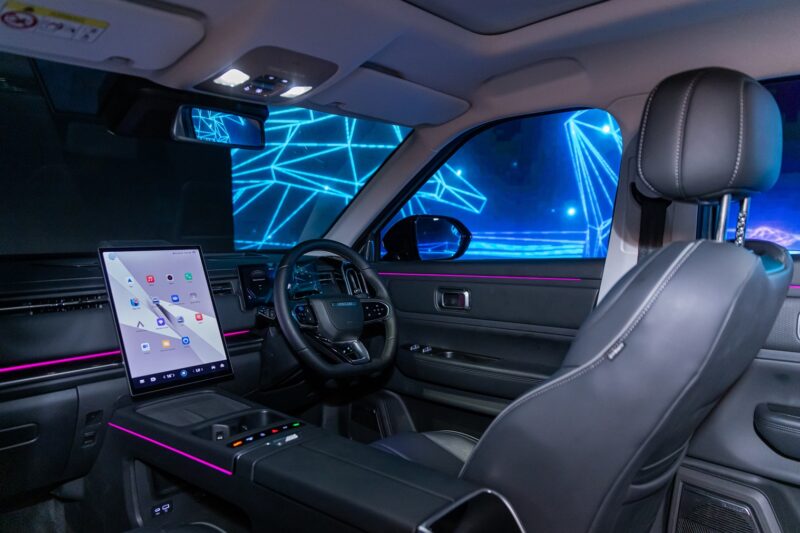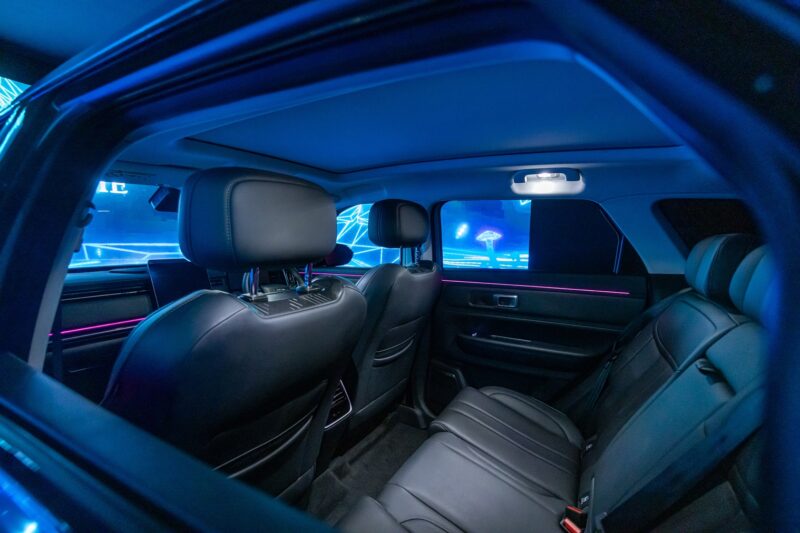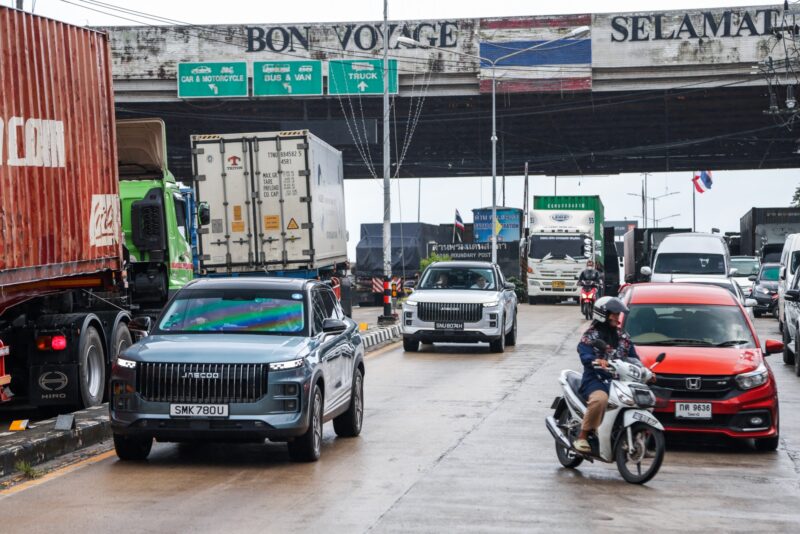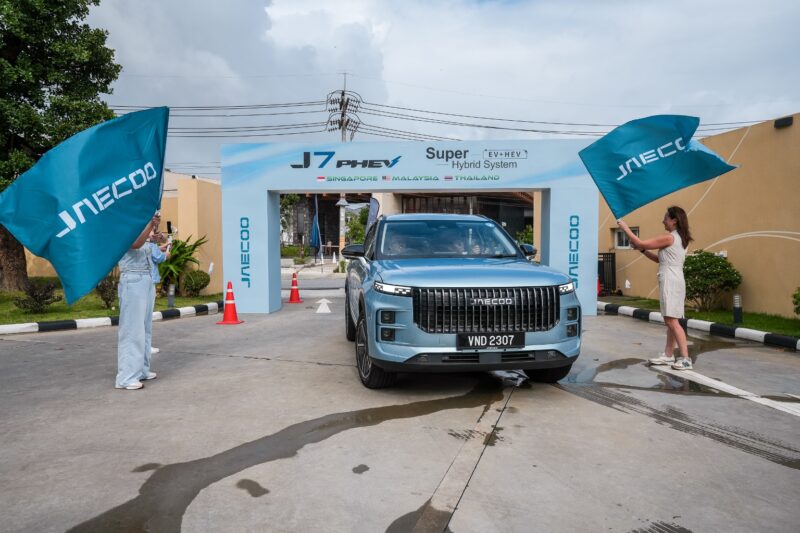Jaecoo J7 PHEV driven from SG to TH, wise choice in light of imminent RON95 subsidy rationalisation?
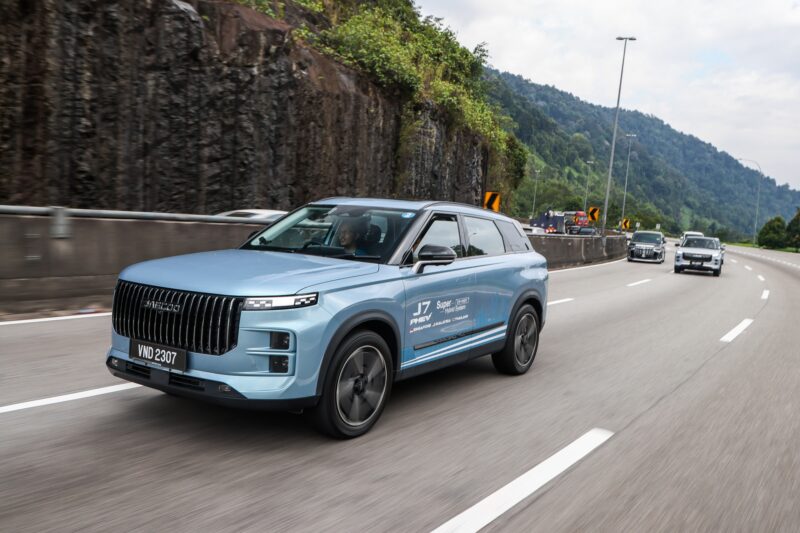
It’s no secret that Jaecoo Malaysia is set to expand its model lineup with the introduction of another SUV, the J7 PHEV.
The upcoming model was unveiled to the media last October and is scheduled for launch on February 28, with an estimated price of around RM170,000.
Although the J7 PHEV has not yet been officially launched, we were fortunate enough to be able to take it for a rather long distance drive last January.

To be exact, yours truly and a few other media representatives actually embarked on a journey from Singapore, through Malaysia to Hatyai, Thailand with just one tank of fuel and a single charge.
The trip aimed to demonstrate the real-world capabilities of Jaecoo’s Super Hybrid System in terms of fuel efficiency.
In other words, it was to discover just how far the J7 PHEV could travel without needing to refuel or recharge the battery.

So, what exactly is the Super Hybrid System? For the J7 PHEV, it comprises a 1.5-litre turbocharged four-cylinder engine paired with a Dedicated Hybrid Transmission (DHT) and an 18.3 kWh battery.
Altogether, the powertrain produces a total system output of 347 hp and 525 Nm of torque, enabling the J7 PHEV to accelerate from 0 to 100 km/h in just 8.5 seconds.
But as you may already know, speed is not the primary focus of this SUV. Its true strength lies in its fuel efficiency, with Jaecoo claiming it can achieve readings as low as 5.99 litres per 100 km.

With a 60-litre tank and a zero-emission driving range of 106 km courtesy of the battery, Jaecoo claims that the J7 PHEV can cover an impressive distance of 1,300 km on a single tank.
On paper, those figures are indeed impressive, but can the SUV prove its mettle in the real world?
I personally believe that the J7 PHEV is capable of covering the claimed distance, at least in theory. But as you may already know, fuel consumption and range depend on various factors, such as driving style, traffic conditions, weather, load, and more.
The three-day trip was undertaken with careful consideration, meaning that the car was driven within the national speed limit for most of the journey. I also made a conscious effort to avoid aggressive acceleration to maintain optimal fuel consumption.
Additionally, to maximise distance, I made use of the regenerative braking system at varying levels of braking force according to the driving conditions.
For instance, when cruising on flat roads, the braking force was set to a low level to allow the vehicle to coast for longer. In hilly areas, however, I increased the braking force to allow the battery to charge more rapidly.
Upon reaching our final destination in Hatyai, the trip computer showed a distance of 1,051 km, with 269 km of fuel range and 21 km of battery range remaining.
When these three figures are combined, the J7 PHEV theoretically could cover up to 1,341 km without needing to refuel or recharge through a cable.

While achieving this figure may be challenging under more realistic driving conditions, if an owner could record a distance of around 1,100 to 1,200 km, I believe that would still be incredibly worthwhile.
Just think about it – how many other SUVs in the same price range can boast such fuel savings? Furthermore, with the anticipated restructuring of the RON95 petrol subsidy set to roll out this year, the J7 PHEV emerges as a very wise choice for buyers in this segment.
Life’s too short to argue about which car is the best. Drive whatever you like, as long as you’re happy with it.




